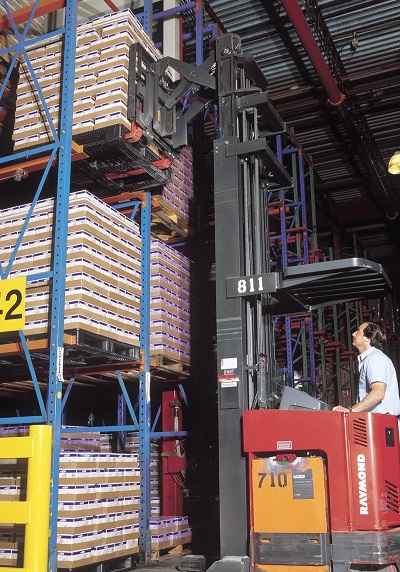Other Voices: Three ways plastic pallets can improve your supply chain

Editor’s note: The following column by Ryan Roessler, product manager, ORBIS Corporation, is part of Modern’s Other Voices column, a series featuring ideas, opinions and insights from end-users, analysts, systems integrators and OEMs. Click here to learn about submitting a column for consideration.
————-
Plastic or wood? With supply chains around the world adapting to evolving technology, new expectations and regulation changes, this pallet question may be more important than ever. Plastic pallets have gained momentum in the industry, particularly in automated storage applications where precision is essential.
A Peerless Media Group study found that, although more than 90% of companies still use wood pallets, 37% use plastic, and some have almost entirely replaced wood with plastic. One of our customers, for example, switched because of the residue that wood pallets left behind on its machines. This resulted in costly line shutdowns every three days for cleaning. If you are experiencing a similar barrier, here are three ways you can benefit from plastic:
1. Reduce supply chain waste and costs
Testing done at the Virginia Tech Center for Packaging and Unit Load Design demonstrates the durability of plastic pallets in rugged environments. Researchers used the center’s FasTrack life-cycle analysis to inspect the condition of a 40-by-48-inch plastic pallet and 40-by-48-inch whitewood stringer pallet after undergoing a 10-step handling sequence. In this sequence, each pallet was loaded with 1,500 pounds and put through routine handling steps such as forklift handling, trailer loading, floor loading racking and conveyance.
In this study, the plastic pallet completed the sequence up to 200 times without failure, while the wood pallet’s average failure was after 11 cycles. The plastic pallet completed more cycles than the wood pallet because of the way it is manufactured. It is molded for durability, which allows the plastic pallet to withstand harsh environments and aggressive handling so it can be used repeatedly — reducing waste and costs associated with one-time-use pallets.
2. Keep plants clean and products safe
Many new operational elements are affecting supply chains, especially in food and beverage applications. Regulations, tracking technologies, information-storing capabilities and inspection equipment are creating a system that is completely transparent, and companies are reacting accordingly. As found in The Association for Packaging and Processing Technologies (PMMI) 2017 Trends in Food Processing Operations Market Research Report, only two out of three companies stated they are 100% compliance with the Food Safety Modernization Act (FSMA), a 2011 regulation with 2018 compliance deadlines.
Under FSMA, pallets should be easy to access and inspect, so packaging designed for product safety is preferred. The one-piece, nonporous design of many plastic pallets prevents odor, moisture and other particles from being absorbed into the plastic material. Plastic pallets also reduce risk associated with splinters and sharp nails contaminating products or harming workers. They can be safely cleaned by allowing high-temperature washing, fast drying, and even X-ray and metal detection in some materials.
3. Support high-velocity automated systems
Pallets are the common denominator in all product loads and have contact with your product every step of the way in the supply chain. They should be chosen wisely because they are essential throughout the entire supply chain and can have damaging effects on a system if they fail. Like the example in my introduction, time and dollars are lost when an automated system stops from broken or unpredictable pallets. For supply chains, standardized pallets will help prevent these costly and frustrating shutdowns.
The PMMI report also states that 52% of companies are focused on increasing automation levels in the next three to five years. This calls for more dimensionally consistent pallets that will interface effortlessly with all types of high-speed automated equipment and future technology.
Supply chains will only get more regulated, technical, transparent and efficient. Choose a pallet that will help your system run smoothly, efficiently and safely. However, every supply chain and operational need is different, so contact a plastic pallet provider to pinpoint the appropriate pallet for you.

Article Topics
Blogs News & Resources
Two voices of reason on pallet materials 60 Seconds with Bob Trebilcock, outgoing executive editor, Modern Materials Handling The reBound Podcast: How Pitney-Bowes is innovating with autonomous vehicles. Packaging Corner: Be open to change 60 Seconds with Robert Martichenko of American Logistics Aid Network The reBound Podcast: Looking for talent in all the right places: How Essendant is revolutionizing recruitment The reBound Podcast: Innovation in the 3PL supply chain More BlogsLatest in Materials Handling
Hyster recognizes Dealers of Distinction for 2023 Carolina Handling names Joe Perkins as COO C-suite Interview with Keith Moore, CEO, AutoScheduler.AI: MODEX was a meeting place for innovation Walmart deploying autonomous lift trucks at four of its high-tech DCs Coles shops big for automation Kathleen Phelps to join FORTNA as chief financial officer Coles automates grocery distribution in Australia More Materials HandlingSubscribe to Materials Handling Magazine

Find out what the world's most innovative companies are doing to improve productivity in their plants and distribution centers.
Start your FREE subscription today.
April 2024 Modern Materials Handling

Latest Resources










